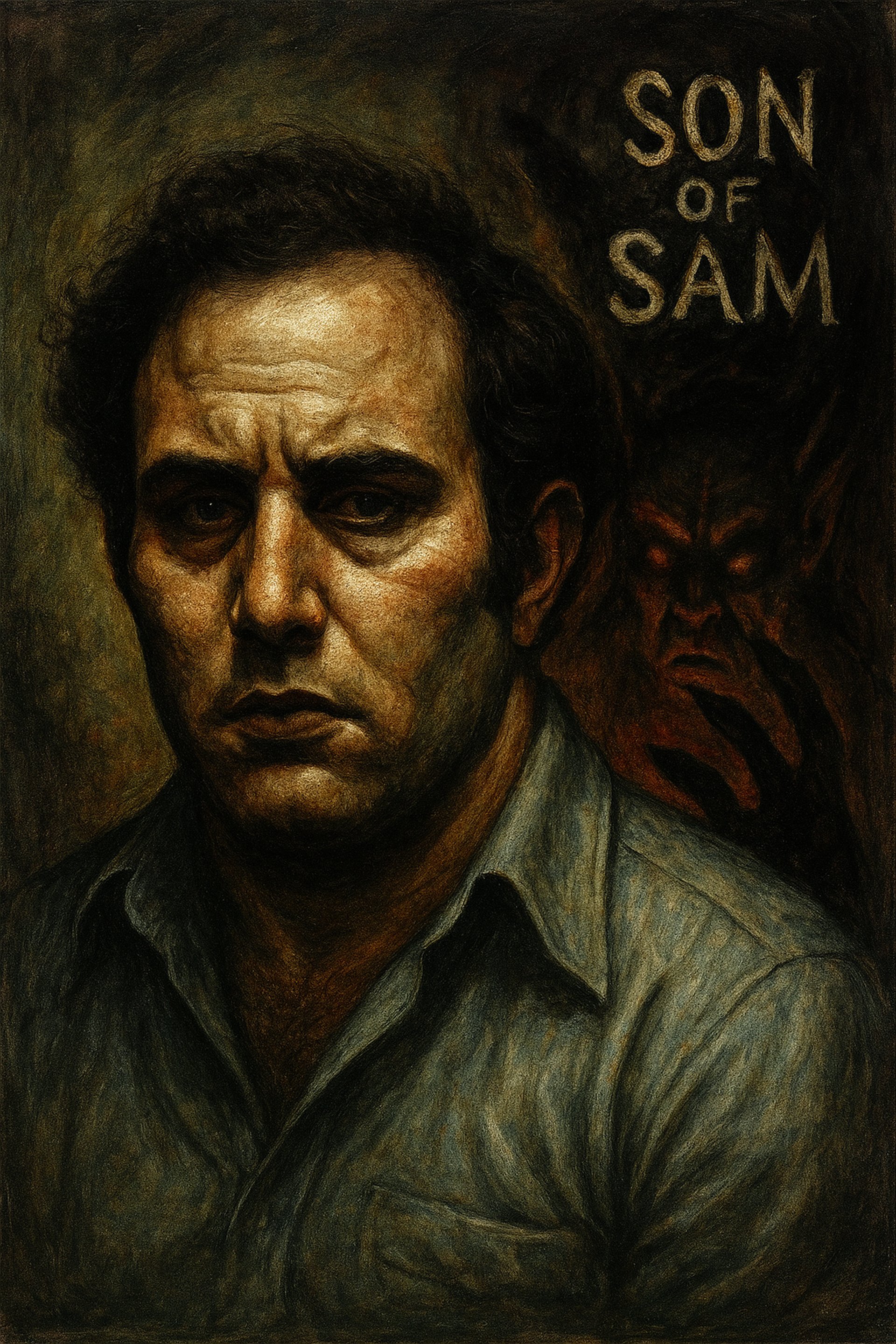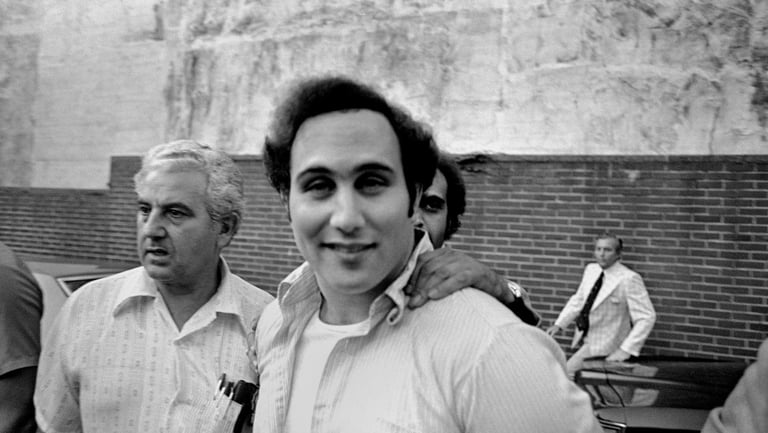
Episode 3 & 4 - Son of Sam
Episode 3 & 4 - Son of Sam - Blog about the show, make sure to check us out on your favorite podcast platform!
TRUE CRIME
Daniel



David Berkowitz, the Son of Sam
The story of one of America’s most infamous serial killers begins not with a bang, but with a quiet adoption. David Berkowitz entered the world on June 1, 1953, in Brooklyn, New York, as Richard David Falco. His biological mother, Elizabeth “Betty” Broder, a waitress who had grown up in poverty, gave him up for adoption mere days after his birth. His biological father was Joseph Kleinman, a married Jewish businessman.
The infant was soon adopted by Pearl and Nathan Berkowitz, a middle-aged Jewish couple from the Bronx who owned a hardware store. They renamed him David Richard Berkowitz and raised him as their only child. Despite a traditional upbringing that included a bar mitzvah, Berkowitz was frequently bullied for being Jewish. Although tests showed he possessed above-average intelligence, he lost interest in school at a young age, developing a disturbing fascination with petty theft and arson. He also suffered several significant head injuries during his childhood.
Neighbors and relatives knew him as a difficult, spoiled, and bullying child. His adoptive parents, concerned by his behavior, even consulted a psychotherapist, yet his misdeeds never escalated to legal trouble or serious notation in his school records.
A pivotal tragedy struck when Berkowitz was 14: his adoptive mother died of breast cancer. Her death shattered his home life, a situation worsened by his open disdain for his adoptive father’s second wife. He lived with his father in a Co-op City apartment while attending and graduating from Christopher Columbus High School in 1971.
Seeking structure, the 17-year-old Berkowitz enlisted in the U.S. Army in 1971, serving at Fort Knox and with an infantry division in South Korea. After receiving an honorable discharge in June 1974, he embarked on a quest that would unravel his fragile psyche: he located his birth mother, Betty Broder. During a handful of visits, she revealed the painful circumstances of his birth, including the identity of his biological father and the fact that he had been given up for adoption. Forensic anthropologist Elliott Leyton later described this revelation as the “primary crisis” of Berkowitz’s life, an event that shattered his already tenuous sense of identity.
After a brief stint at Bronx Community College and a series of odd jobs, Berkowitz was working as a letter sorter for the U.S. Postal Service at the time of his arrest. But long before that, he had begun a different, horrifying career.
The Descent into Violence
Berkowitz’s violent crime spree began in the mid-1970s, terrorizing the New York boroughs of the Bronx, Brooklyn, and Queens. His first known attack occurred in the early hours of December 25, 1975. On a bridge near his home, he approached 15-year-old Michelle Forman and stabbed her six times with a hunting knife. She survived but was left deeply traumatized. This act of brutal violence was a grim preview of what was to come, though it would not be linked to him until after his capture.
He soon switched from a knife to a handgun, and his primary targets became young women, often attacking them while they were with their boyfriends in parked cars.
The Lauria and Valenti Shooting (July 29, 1976): The first shooting that would define his pattern occurred in the Bronx. Berkowitz approached Donna Lauria and Jody Valenti sitting in a car and fired three shots. Lauria was killed instantly; Valenti was wounded in the thigh. Witnesses reported a yellow compact car circling the area for hours beforehand.
The Denaro and Keenan Shooting (October 23, 1976): In Queens, Berkowitz fired into a car occupied by Carl Denaro and Rosemary Keenan. Denaro was shot in the head, requiring a metal plate in his skull. Police found .44 caliber bullets, the same as in the Lauria attack, but the cases were initially investigated separately.
The DeMasi and Lomino Shooting (November 27, 1976): In a brazen move, Berkowitz approached Joanne Lomino and Donna DeMasi on a residential porch. After asking for directions, he opened fire. Lomino was shot in the back, paralyzing her from the waist down. DeMasi was wounded in the arm and chest.
The Freund and Diel Shooting (January 30, 1977): After seeing the movie Rocky, Christine Freund and John Diel were shot while sitting in their car. Freund was killed; Diel escaped with minor injuries. The NYPD now publicly acknowledged a possible connection between the .44 caliber attacks.
The Voskerichian Shooting (March 8, 1977): Marking a terrifying escalation, Berkowitz attacked Virginia Voskerichian as she walked home from school in broad daylight. She attempted to shield herself with her textbooks, but was shot in the head and killed. The city was now gripped by palpable fear.
The media dubbed him the “.44 Caliber Killer.” Circulation for New York tabloids soared as the story captured international attention.
The Esau and Suriani Shooting (April 17, 1977): Berkowitz struck again in the Bronx, killing Valentina Suriani and mortally wounding Alexander Esau. It was at this scene that police found a handwritten letter that would change everything.
The Son of Sam Letters
The letter found near the bodies of Esau and Suriani was addressed to NYPD Captain Joseph Borrelli. In it, the author christened himself the “Son of Sam,” a name that would instantly eclipse his previous moniker. The rambling, dramatic letter spoke of “Father Sam” who demanded blood and mocked the police’s inability to catch him. It was a calculated act of terror designed to taunt his pursuers and cement his mythos.
On May 30, 1977, Daily News columnist Jimmy Breslin received another letter postmarked from New Jersey. It chillingly began, “Hello from the gutters of N.Y.C. which are filled with dog manure, vomit, stale wine, urine and blood.” The writer gloated about his work, promised more violence, and reminded Breslin not to forget Donna Lauria. The city was now in a state of siege.
The Final Attacks and the Net Closes
Despite the massive police dragnet, Berkowitz struck two more times.
The Lupo and Placido Shooting (June 26, 1977): Salvatore Lupo and Judy Placido were shot in their car in Queens after leaving a disco. Both survived. Crucially, witnesses provided a description of a fleeing man and a partial license plate number.
The Moskowitz and Violante Shooting (July 31, 1977): On the first anniversary of the first shooting, Berkowitz claimed his final victim in Brooklyn. Stacy Moskowitz was killed and Robert Violante was blinded in one eye after their first date. A key witness, Cacilia Davis, reported seeing a suspicious man near a ticketed car just before the shots rang out.
The ticket led police to a yellow Ford Galaxie registered to David Berkowitz in Yonkers. A call to the Yonkers PD revealed more: Berkowitz was already known to them for shooting a neighbor’s dog, a black Labrador named Harvey, who belonged to a man named Sam Carr.
The Arrest
On August 10, 1977, police staking out Berkowitz’s apartment saw a gun on the seat of his car. As he approached the vehicle that night, detectives moved in. When Detective John Falotico approached with his gun drawn, Berkowitz calmly stated, “Well, you got me.” When asked who he had caught, Berkowitz replied softly, “You know.” Pressed further, he turned and said, “I’m Sam.”
In his car, police found the .44 caliber Bulldog revolver and a duffel bag containing maps of the crime scenes and a threatening letter addressed to the head of the Son of Sam task force.
Confession, Sentencing, and a Twisted Motive
Berkitz quickly confessed, initially attributing his actions to demonic commands from his neighbor Sam Carr’s dog, Harvey. He claimed the demon demanded the blood of young women. He pled guilty to all charges in May 1978. At his sentencing, he erupted in a violent outburst, attempting to leap from a courtroom window and shouting that his victims were “whores” and that he would “kill them all again.”
Despite this, he was deemed fit for trial and sentenced to 25 years to life for each murder, to be served consecutively.
The Son of Hope
In 1987, after a decade in prisons like Attica—where he survived a slashing attack—Berkowitz underwent a profound religious conversion to evangelical Christianity. He now calls himself the “Son of Hope,” writes essays on faith, and ministers to other inmates. He has earned a college degree with honors and is considered a model prisoner.
Yet, he has consistently denied his own parole at every hearing, stating he deserves to remain in prison for life. In his own words, he attends these hearings not to seek freedom, but to “openly apologize for my past crimes and to express my remorse.”
David Berkowitz’s story remains a dark chapter in American crime, a terrifying saga of how a troubled boy evolved into a monster who held a city hostage, and who now lives out his days seeking a redemption that society may never grant.



